Cockatoos, known for their playful and energetic nature, often engage in a unique behaviour that captivates their human companions: dancing.
These charismatic birds display a remarkable ability to move rhythmically, bobbing their heads, flapping their wings, and even stomping their feet in sync with the music or their internal rhythm.
It is a spectacle that leaves many bird enthusiasts and researchers wondering about the motivations behind their dance moves. Have you ever wondered why cockatoos dance?
This article will explore the fascinating world of cockatoo dancing, unravelling the reasons behind this behaviour and whether it signifies excitement or something else entirely.
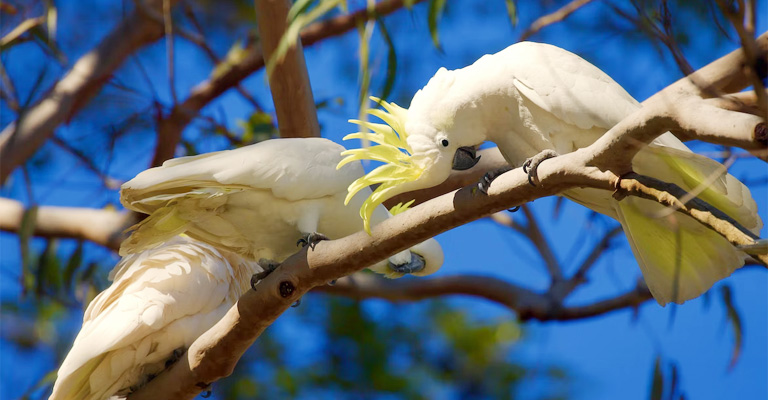
How Do Cockatoos Dance?
Cockatoos employ various movements and gestures when they dance, showcasing their individuality and vibrant personalities.
Some common dance moves these avian performers exhibit include head bobs, wing flapping, foot stomping, body swaying, and synchronized hopping.
They often accompany these movements with vocalizations, creating a complete performance that is both visually and audibly captivating.
Why Is My Cockatoo Dancing?
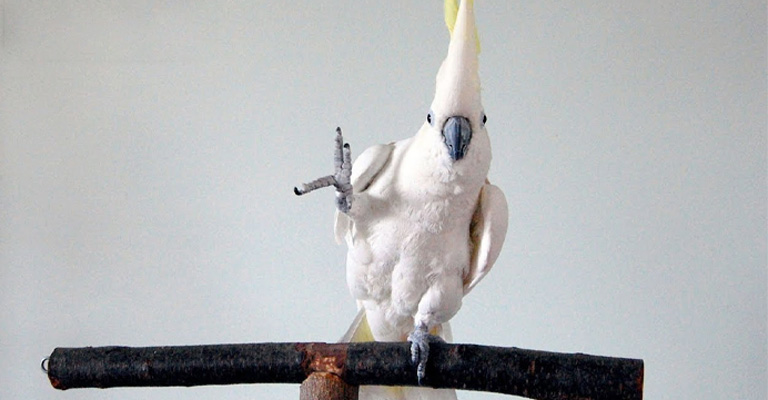
You may be curious about what prompts this behaviour if you have a dancing cockatoo at home. While every bird is unique and may have specific reasons for dancing, here are six common explanations for cockatoo dancing:
Expression of Happiness
Cockatoos, being social creatures, often dance to express joy and contentment. They may dance when they are excited, playful, or enjoying the company of their human companions.
Seeking Attention
As cockatoos are intelligent birds, they crave mental and physical stimulation. Dancing can be their way of seeking attention from their owners or other flock members. They can elicit interaction, playtime, or treats by showcasing their unique moves.
Courtship and Mating Rituals
Dancing plays a crucial role in courtship displays among cockatoos. Males often dance to attract females, showcasing their agility and vigour. These elaborate displays, accompanied by vocalizations, allow males to establish their desirability and form a bond with potential mates.
Territory Marking
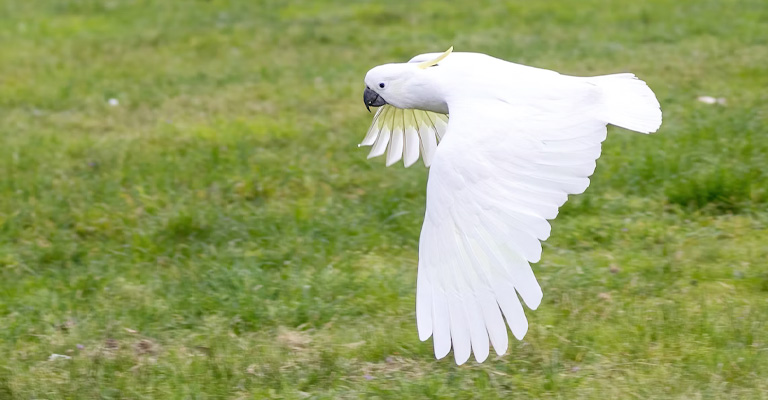
Dancing can also be a form of territorial display. Cockatoos may engage in elaborate dance routines to assert ownership of a particular area. These displays can warn other birds, indicating that the dancing cockatoo has claimed that territory.
Imitation and Learning
As you know, cockatoos are known for their imitative abilities. They may observe and mimic the dancing movements they witness in their environment, including humans dancing or other birds performing their unique routines. This behaviour allows them to learn and incorporate new dance moves into their repertoire.
Emotional Release
Cockatoos, like other animals, can experience a range of emotions. Dancing can be a form of emotional release, allowing them to express frustration, excitement, or even anxiety. It provides an outlet for their energy and helps them cope with their emotions.
Do All Cockatoos Dance?
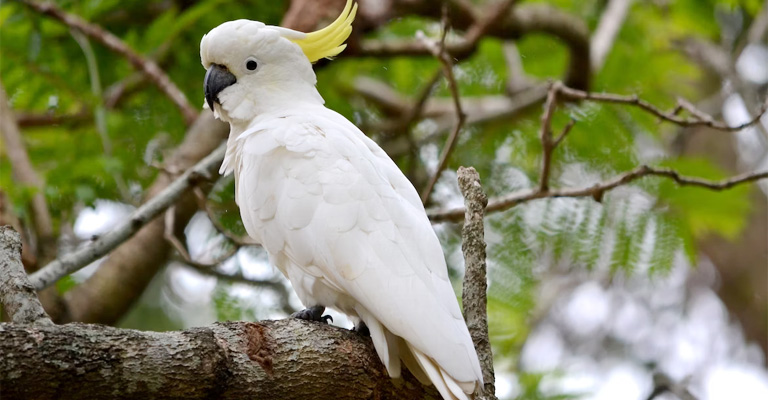
While it is true that many species of cockatoos are known for their playful and expressive behaviours, not all cockatoos can be considered avid dancers.
However, some species of cockatoos are mainly known for their dancing abilities. Here are a few species that are often associated with dancing:
Sulfur-crested Cockatoo (Cacatua galerita)
This is one of the most popular and recognizable species of cockatoo. Sulphur-crested cockatoos are known for their lively personalities and ability to dance and bob their heads to music or rhythmic sounds.
Major Mitchell’s Cockatoo (Lophochroa leadbeateri)
Also known as Leadbeater’s cockatoo, this species is named after Sir Thomas Mitchell, an Australian explorer. Major Mitchell’s cockatoos are renowned for their elaborate courtship displays, which include dancing, head-bobbing, and raising their colourful crests.
Red-tailed Black Cockatoo (Calyptorhynchus banksii)
These striking cockatoos are native to Australia and are known for their distinctive calls and aerial acrobatics. While they may not dance traditionally, they display energetic movements during courtship rituals, which can be interpreted as dancing.
Palm Cockatoo (Probosciger aterrimus)
Found in northern Australia and New Guinea, palm cockatoos are considered highly intelligent and possess a wide range of vocalizations.
During courtship displays, they engage in rhythmic drumming on branches using sticks or seed pods. Their drumming can be seen as a unique form of dance.
Gang-gang Cockatoo (Callocephalon fimbriatum)
Native to Australia, the gang-gang cockatoo has a distinctive appearance with its grey body and bright red head. While not as known for their dancing as some other species, they can exhibit lively movements during social interactions and courtship displays.
It’s important to note that individual birds within each species can have their unique personalities and preferences. Some cockatoos may be more inclined to dance or engage in playful movements than others.
How Do I Make My Cockatoo Dance?
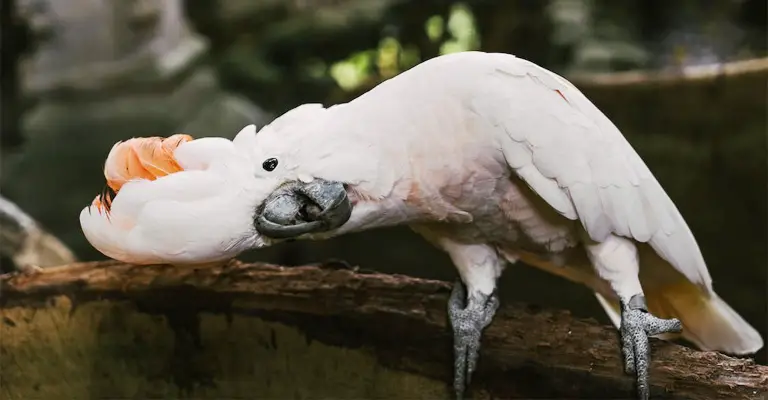
If you want to encourage your cockatoo to dance or enhance their existing dance skills, here are seven ways to make your feathered friend groove to the rhythm:
Music and Rhythm
Play music with a catchy beat and rhythm that your cockatoo enjoys. Experiment with different genres and observe which ones elicit a dancing response.
Visual Stimulation
Provide visual stimuli such as colourful toys, moving objects, or videos of other cockatoos dancing. This can inspire your bird to imitate and incorporate the movements into its dance routine.
Encouragement and Positive Reinforcement
Applaud, praise, and reward your cockatoo when they engage in dancing behaviours. Positive reinforcement can motivate them to dance more frequently.
Dance with Your Cockatoo
Birds are social creatures and often enjoy participating in activities with their human companions. Dance alongside your cockatoo, showing them the dance moves and encouraging them to follow suit.
Frequent Exercise and Playtime
Cockatoos are active birds that require regular exercise and mental stimulation. Please provide them with ample opportunities for physical activity, such as flying, climbing, and playing with toys. This can help release their pent-up energy and increase the likelihood of dancing.
Create a Safe and Stimulating Environment
Ensure that your cockatoo’s living space is enriched with toys, perches of varying heights, and interactive elements. A stimulating environment encourages movement and can inspire your bird to engage in dancing.
Patience and Time
Every cockatoo has its unique personality and preferences. Some may take to dancing quickly, while others may require more time and patience. Be consistent in your efforts and allow your bird to develop its dancing style at its own pace.
FAQs
No, dancing behaviours have been observed in various bird species, including parrots, pigeons, birds of paradise, and cranes. However, cockatoos are mainly known for their energetic and entertaining dance performances.
While dancing comes naturally to some cockatoos, each bird has its personality and preferences. Some may be more inclined to dance, while others may exhibit the behaviour less frequently or with less enthusiasm.
Yes, it is possible to train a cockatoo to perform specific dance moves with patience, consistency, and positive reinforcement. However, it is essential to respect the bird’s individuality and never force them to perform beyond their comfort level.
Cockatoos are social birds that thrive on interaction and attention. When guests are present, there is often a heightened level of activity and excitement, which can stimulate your cockatoo to engage in more frequent dancing behaviours.
Cockatoos can dance to a wide range of music genres. However, they may show preferences for specific beats or rhythms. Experiment with different types of music to find the ones that elicit your bird’s most enthusiastic dancing response.
Final Words
Now you know why cockatoos dance and what it means. The dancing behaviour of cockatoos is a fascinating aspect of their vibrant personalities.
Whether it is a form of expression, courtship, or simply seeking attention, dancing is an integral part of their behavioural repertoire.
By understanding the motivations behind their dance moves and providing them with the right stimuli and environment, you can nurture and appreciate this delightful behaviour in your dancing cockatoo. So put on some music, let loose, and join your feathered friend in the joyous dance rhythm!